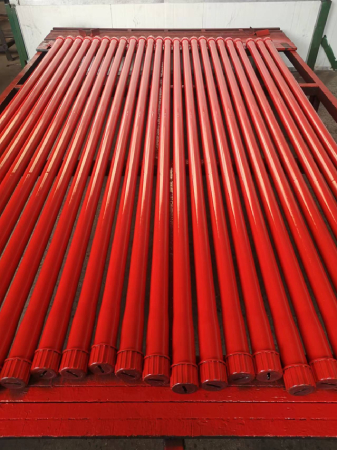- Afrikaans
- Albanian
- Amharic
- Arabic
- Armenian
- Azerbaijani
- Basque
- Belarusian
- Bengali
- Bosnian
- Bulgarian
- Catalan
- Cebuano
- Corsican
- Croatian
- Czech
- Danish
- Dutch
- English
- Esperanto
- Estonian
- Finnish
- French
- Frisian
- Galician
- Georgian
- German
- Greek
- Gujarati
- Haitian Creole
- hausa
- hawaiian
- Hebrew
- Hindi
- Miao
- Hungarian
- Icelandic
- igbo
- Indonesian
- irish
- Italian
- Japanese
- Javanese
- Kannada
- kazakh
- Khmer
- Rwandese
- Korean
- Kurdish
- Kyrgyz
- Lao
- Latin
- Latvian
- Lithuanian
- Luxembourgish
- Macedonian
- Malgashi
- Malay
- Malayalam
- Maltese
- Maori
- Marathi
- Mongolian
- Myanmar
- Nepali
- Norwegian
- Norwegian
- Occitan
- Pashto
- Persian
- Polish
- Portuguese
- Punjabi
- Romanian
- Russian
- Samoan
- Scottish Gaelic
- Serbian
- Sesotho
- Shona
- Sindhi
- Sinhala
- Slovak
- Slovenian
- Somali
- Spanish
- Sundanese
- Swahili
- Swedish
- Tagalog
- Tajik
- Tamil
- Tatar
- Telugu
- Thai
- Turkish
- Turkmen
- Ukrainian
- Urdu
- Uighur
- Uzbek
- Vietnamese
- Welsh
- Bantu
- Yiddish
- Yoruba
- Zulu
bull plug definition
Understanding Bull Plug Definition and Applications
The term bull plug may not be widely recognized in everyday conversation, but it holds significance in specific industries and applications, particularly in the oil and gas sector. A bull plug is a fitting used to close off the end of a pipe or a piece of equipment, preventing the escape of fluids or gases. Understanding its definition, function, and applications is essential for professionals working with piping systems, especially in high-pressure environments.
Definition and Characteristics
A bull plug is essentially a type of pipe plug designed to seal the end of a pipe securely. It is often made from durable materials such as steel, stainless steel, or plastic, depending on the intended application and the type of fluids or gases being contained. The design of a bull plug typically features a threaded exterior that allows for easy installation and removal from the corresponding threaded opening of a pipe.
One of the defining characteristics of a bull plug is its ability to withstand high pressure and temperature fluctuations, making it suitable for use in demanding industrial environments. In situations where a pipe needs to be closed off temporarily or permanently, such as during maintenance or when a section of a pipeline is no longer in use, a bull plug provides a reliable sealing solution.
Applications in Industry
The applications of bull plugs are varied and can be found across many industries, most notably in oil and gas, chemical processing, and water treatment. In the oil and gas industry, bull plugs are used to seal off wells, pipelines, and other equipment. This is crucial during maintenance operations where a section of the system needs to be isolated to ensure safety for workers and prevent leaks.
bull plug definition

In chemical processing, the integrity of containment systems is paramount. Bull plugs are used to prevent hazardous materials from leaking from pipes, thus protecting both personnel and the environment. The chemical composition of the materials used for bull plugs is often carefully selected to ensure compatibility with the substances being transported, minimizing the risk of corrosion or chemical reaction.
Additionally, in water treatment facilities, bull plugs play a critical role in managing the flow of water through various treatment processes. They are used to isolate sections of piping for repair or to prevent backflow during maintenance activities, ensuring that contaminants do not enter the clean water supply.
Installation and Maintenance
Proper installation of a bull plug is essential to ensure its effectiveness. Before installation, it is important to inspect the threads and the sealing surfaces for any damage. Using the right tools and techniques is also crucial, as over-tightening can lead to stripping of the threads or damage to the pipe. Regular maintenance checks can help identify any potential issues, such as wear or corrosion, allowing for timely replacement of bull plugs and ensuring ongoing integrity of the piping system.
Conclusion
In conclusion, the bull plug is a vital component in various industrial applications, serving as a reliable solution for sealing pipes and preventing leaks. Its ability to withstand high pressure and temperature makes it indispensable in sectors like oil and gas, chemical processing, and water treatment. Understanding its definition, characteristics, and applications enables professionals to utilize bull plugs effectively, ensuring safety and efficiency in complex piping systems. As industries continue to evolve and grow, the importance of such fittings will remain significant, highlighting the need for ongoing education and awareness in their utilization.
-
Tubing Pup Joints: Essential Components for Oil and Gas OperationsNewsJul.10,2025
-
Pup Joints: Essential Components for Reliable Drilling OperationsNewsJul.10,2025
-
Pipe Couplings: Connecting Your World EfficientlyNewsJul.10,2025
-
Mastering Oilfield Operations with Quality Tubing and CasingNewsJul.10,2025
-
High-Quality Casing Couplings for Every NeedNewsJul.10,2025
-
Boost Your Drilling Efficiency with Premium Crossover Tools & Seating NipplesNewsJul.10,2025







